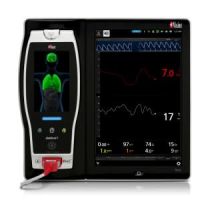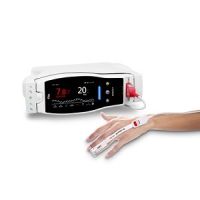The Utah State Legislature and Governor Gary Herbert have recently signed into law the Concurrent Resolution on Deaths From Opioid-Induced Postoperative Respiratory Depression (SCR4). The resolution urges hospitals, clinicians, and researchers to examine and identify possible links between opioids and respiratory depression following surgery and encourages doctors to prescribe home monitoring for applicable patients, which may alert caregivers to low oxygen saturation (SpO2) and changes in breathing which can precede cardiac arrest and death. Pulse oximetry technology was used in the case studies that helped shape the legislation, providing lawmakers with compelling evidence of the need for postoperative home SpO2 monitoring of patients who are prescribed opiate painkillers.
SCR4 is commonly referred to as “Parker’s Bill” in memory of Parker Stewart, a 21-year-old newlywed who tragically passed away in his sleep three days after tonsillectomy surgery, as a result of respiratory depression believed to be caused by opioid painkillers, of which he had taken only half the prescribed dose.
Researchers at Uintah Basin Medical Center and Intermountain Healthcare – Dr. Michael Catten, Shay Uresk, BSRT, RRT, SDS, and Kim Bennion, MsHS, RRT, CHC – have been investigating the utility of home pulse oximeter use on postoperative patients. Several case studies – using Masimo (NASDAQ: MASI) SET®Measure-through Motion and Low Perfusion™ pulse oximetry and rainbow Acoustic Monitoring® with RRa® – helped illustrate the benefits of postoperative monitoring for respiratory depression. Their work formed the basis for what became “Parker’s Bill,” SCR4.
“Even at normal doses, opioids can cause respiratory depression and death, and yet, the technology to monitor patients who are taking opioids is minimally expensive,” commented Dr. Catten. “Home monitoring can save thousands – not a few, thousands – of lives a year. SCR4 passed unanimously through all committees and houses of the Utah legislature, without dissent, and I hope we’ll be able to get other states onboard with similar home monitoring resolutions.”
Moving forward and in accordance with the recommendations made in SCR4, clinicians at Uintah Basin Medical Center and Intermountain Healthcare are now prescribing home SpO2 monitoring using Masimo technology and devices, such as Rad-97™ Pulse CO-Oximeters®. Taking advantage of Rad-97’s advanced connectivity capabilities when used together with Masimo Patient SafetyNet™*, a remote supplemental patient surveillance and clinician notification system, doctors are able to remotely monitor their at-home patients for signs of respiratory depression in real time, as an added precaution.
“This technology is a game
changer,” notes Dr. Catten. “The ability to observe and communicate with
patients from afar is key. It’s like having your own EMT by your side at home,
watching to make sure you’re okay after surgery. I’m so grateful to the
engineers who work so hard to develop this technology, which has the potential
to save so many lives.”
In a landmark study at Dartmouth-Hitchcock Medical Center in New Hampshire, researchers found that continuous monitoring of adult post-surgical patients using Masimo SET® on Masimo bedside devices, in conjunction with Masimo Patient SafetyNet, resulted in a 65% reduction in rapid response team activations and a 48% reduction in transfers back to the ICU.1 Over five years, they achieved their goal of zero preventable deaths or brain damage due to opioids,2 and over ten years, they maintained a 50% reduction in unplanned transfers and a 60% reduction in rescue events, despite increase in patient acuity and occupancy.3
Joe Kiani, Founder and CEO of Masimo, commented, “We are so happy to see Utah lawmakers recognize the suffering and death that unmonitored postoperative use of prescription painkillers can lead to – and the lives that continuous SET® pulse oximetry monitoring can help to save. Masimo is honored to have been part of the research and the solution surrounding passage of this historic legislation. We hope other states and countries will follow in addressing this important patient safety issue.”
*The use of the trademark Patient SafetyNet is under license from University HealthSystem Consortium.
References
- Taenzer AH et al. Impact of Pulse Oximetry Surveillance on Rescue Events and Intensive Care Unit Transfers: A Before-And-After Concurrence Study. Anesthesiology. 2010; 112(2):282-287.
- Taenzer AH et al. Postoperative Monitoring – The Dartmouth Experience. Anesthesia Patient Safety Foundation Newsletter. Spring-Summer 2012.
- McGrath SP et al. Surveillance Monitoring Management for General Care Units: Strategy, Design, and Implementation. The Joint Commission Journal on Quality and Patient Safety. 2016 Jul;42(7):293-302.



























